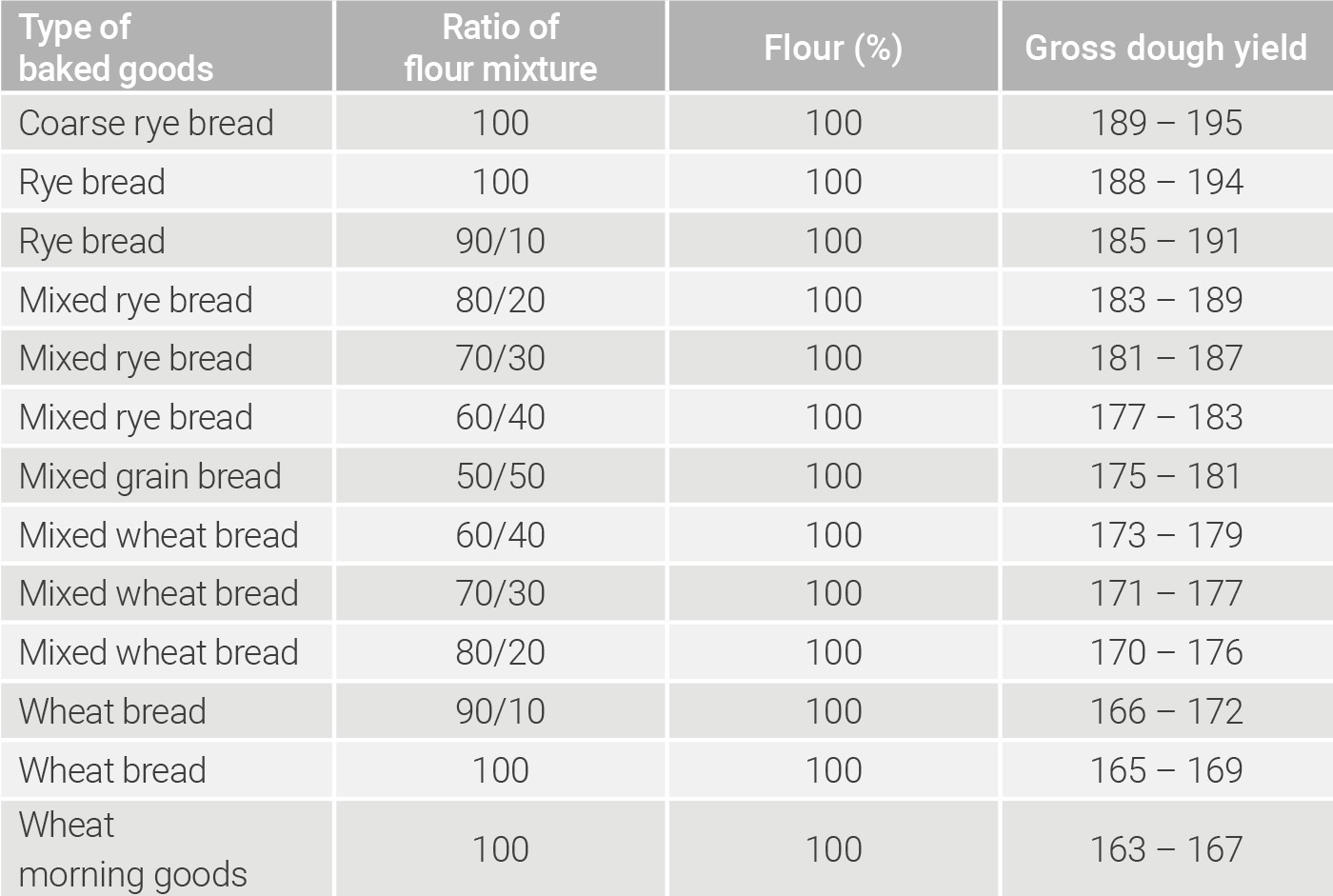Gross dough yield is understood to be the amount of dough which is obtained from 100 parts flour, the addition of liquid and all the other ingredients. It mainly depends on the addition of liquid and is influenced by the other dough ingredients such as yeast, salt, fat, milk powder and improvers.
In table 5.3, the gross dough yield is shown based on an example recipe for wheat baked goods.
The gross dough yield can be calculated by means of the following:
For doughs which are prepared using the direct or combined dough method and without special baking ingredients, the following guiding values apply for the gross dough yield:
These figures are only guiding values. For a calculation based on dough yields, the losses in flour during delivery, dough production and dough processing as a result of dust clouds and sticking, as well as the consequences of fermentation due to the transformation of starch via sugar into volatile substances, have to be considered, which, depending on the circumstances, can be up to 5 %.




